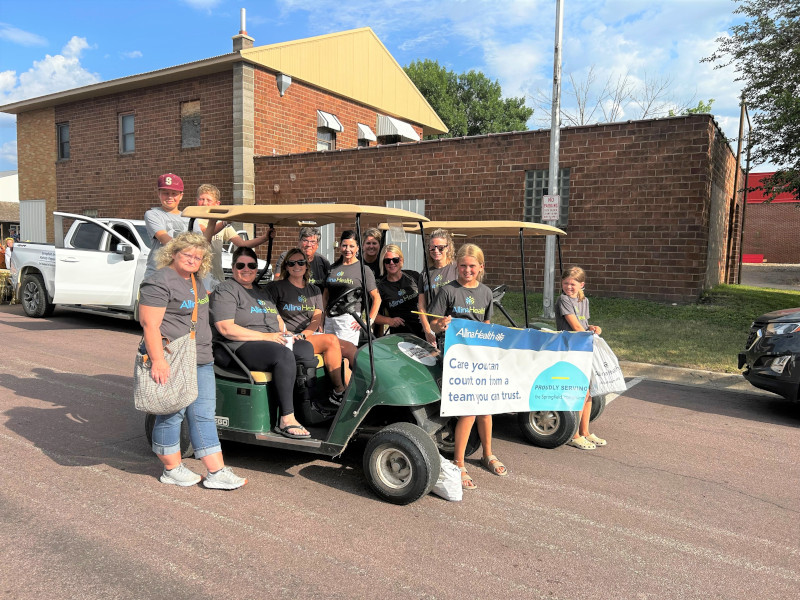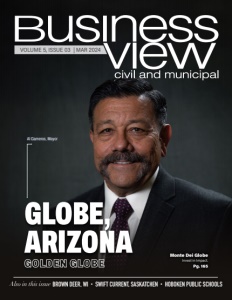City of Springfield, Minnesota
Where visions become reality − one brick at a time
Offering a Blue-Ribbon School and top-tier initiatives that speak to the heart of the community
Along the banks of the Cottonwood River in Brown County, Minnesota (MN), amid the peaceful prairie and some of the world’s most productive farmland, sits Springfield. The city of just over 2000 residents was founded in 1877 as “Burns” and renamed “Springfield” in 1881.
Early established businesses form the foundation the modern city of Springfield rests on today. In 1890, Adolph Casimir Ochs established the Ochs Brick and Tile Company and was a major contributor to the township’s early growth. Although the business ceased operations in 2016, it contributed to Springfield’s progress for 126 years and this is visible in the beautiful brick homes and downtown businesses still standing in Springfield today.
Another historically significant business in Springfield is St. John’s Lutheran Home which has continuously cared for Springfield’s residents at its current location for over 115 years. Their “circle of care” offers elderly housing, assisted living, skilled nursing, end of life care, and infant, toddler, and preschool daycare programs.
Another large employer of significance is Sanborn Manufacturing, a MAT Industries Division, LLC. Sanborn is deeply rooted in the local landscape and has adapted through the years to keep a strong presence in Springfield.
The interplay between historical roots and present-day vitality is a defining feature of Springfield’s business ethos. Ochs and St John’s Lutheran Home, with their century-long legacies, and the enduring presence of Sanborn, symbolizes the municipality’s continued economic strength.
While Springfield has attained prosperity, it has also faced obstacles. Civic strength and resilient leaders fuel solutions to these challenges, demonstrating the city’s commitment to its citizens and enterprises.

Resident Care and Community Contributions
In December 2019 prior to COVID, the Mayo Clinic Health System pulled out of its long-term contract to operate the city owned hospital in Springfield. The closure was to take effect in March 2020, giving only three months’ notice. The city showed resilience in response to this unforeseen challenge.
Theresa Beckman, Springfield City Councillor, states, “We pivoted, and quickly interviewed five hospital systems and chose Allina as our best in primary care. Little did we know COVID was coming, and the world was going to change.”
Allina played a vital role in opening a clinic to ensure continuity in health care for residents. Amber Dale, Springfield City Manager, adds, “Allina’s Springfield Clinic is one of the highest performers in Minnesota for outcomes related to preventative care including chronic illnesses, cancer screenings, and diabetes management. We are thriving, not just surviving.” The city continues to own the hospital building with most of that space unutilized. The building is currently for sale or lease.
Built through donations from residents, the Community Center, Library, Riverside Park complex, and other projects underscore the robust relationship that is a driving force behind community projects.
With a large capacity, the community center is a hub for events. Dale highlights its versatility, “Weddings accommodate up to 500 attendees, along with hosting other functions such as business training and local events.” In parallel, the library serves as a cultural and recreational hub, hosting art shows and events catering to the local’s diverse interests. Riverside Park is a 40+ acre recreational park along the river with walking trails, campground, pool and more. The baseball and softball complex in the park hosted the Minnesota State baseball tournament in 2020 amid COVID.
These amenities enhance residents’ quality of life and reinforce Springfield’s dedication to community well-being.
Springfield Adopts a Hybrid Population
Springfield faced the global hybrid work trend during COVID-19, and reliable internet became a utility rather than a luxury. To accommodate this influx, local utilities began installing high-speed fiber connectivity to homes last year, aligning with the broader aim of enhancing infrastructure. Paul Pieschel, Springfield Economic Development Authority Board Chair, states, “Individuals unaffiliated with our community have chosen to move here based on its beauty and stillness, and they continue to work remotely.”
The municipality owns and leases duplexes, but still cannot meet the housing need. Dale explains, “We have had a 35-person waiting list for those. So, the opportunity is here to develop more housing.” The city also owns parcels with paved roads and utilities available for residential development. “We offer a five-year tax abatement on any new homes in the city,” says Dale. A privately owned residential development has larger lots for sale with utilities in place as well. Efforts are underway to name areas for future expansion once current projects near capacity.
A National Blue-Ribbon and State Championship School
With growth comes the need for outstanding education, and Springfield is proud of its students’ academic achievements. Springfield High School ranks among the top-performing districts in Minnesota.
In 2022, the institute received the National Blue-Ribbon School Award from the U.S. Department of Education, a distinction shared with only one other district in the state − Rochester. Beckman adds, “Local colleges offer dual enrollment, and many of our kids graduate with a full semester of college completed.”
Beyond academics, the town reached the Class A State Football Championship, and the National Association of Music Merchants (NAMM) Foundation recognized it in 2023 as one of the Best Communities for Music Education.
The high school offers a valuable program called work-based learning, where seniors dedicate one semester to working at a business for two hours a day. Beckman explains, “If a student aspires to be a physical therapist, they partner with the local clinic and shadow with the physical therapist.” This has yielded consistent success in bringing students back to local employment after college.
Furthermore, Beckman adds that students take part in extracurricular activities, enriching the educational experience. “Well over 90% of kids take extracurriculars and not just one − they are not just a jock or a band nerd, they are both.”
The school secured $20 million for enhancements and recently completed an addition including a new entrance, new gym and weight room, tornado shelter and other safety features, as well as remodeling music and career class spaces.

The Rural Economic Venture and Kickstart Springfield
Springfield’s commitment to ongoing improvement is clear, not only in the physical infrastructure and recreational interests but also in its active involvement with the Economic Development Authority (EDA).
The city received a grant from the Rural Economic Venture (REV) in 2020 and collaborated with a University of Minnesota representative. Paul Pieschel explains, “We spent the last three years doing a thorough analysis of what we could do to improve and build upon in our community.” The program focuses on the duty to sustain fiscal growth.
Kickstart Springfield, the city’s REV group, cultivates a dynamic economy by supporting startups and local entrepreneurs. This includes helping new businesses and existing ones. “Kickstart held a training for local business owners on a new law called Earned Sick and Safe Time (ESST),” says Dale. Employer-provided ESST is a mandated paid leave in Minnesota and relies on specific criteria.
This proactive approach to information sharing underscores Springfield’s dedication to keeping local enterprises up-to-date with developing legal frameworks.
Springfield Municipal Airport plays a vital role in economic development as a crucial connector to the region, facilitating life-saving medical operations, aiding agricultural aviation for farms, and accommodating business aviation needs.
The town adheres to a capital improvement plan, requiring annual state applications to secure funds for planned projects. But, last December, Springfield expanded its base aircraft to 11, earning a National Plan of Integrated Airport Systems (NPIAS) Airport designation and qualifying for annual federal funding. Dale says, “They entitled us to federal money each year. The projects we have planned are to offer jet A fuel, build more hangars, and potentially extend the runway. This would be a great opportunity for a large business looking to invest in the community.”
A Consistent Plan for the Future
Beckman envisions further growth for Springfield, and for the town to continue as one of the top performers in the vicinity. “We are doing our education well and continuing along that path.” Another focus will be ongoing housing development. Pieschel agrees, “Residential housing is a top priority. We will continue to expand our local housing to offer adequate accommodation for employers to attract new workers.”
From its humble beginnings on the Cottonwood River, Springfield has forged ahead and established itself, building a powerful community where civic involvement counts. The town exhibits a supportive environment for raising families, with top-notch teachers invested in the success of their students.
The municipality supports its businesses and entrepreneurs through start-up aid, expansion, and renovation funding. For residents, the city offers tax incentives and other aids to boost the workforce economy. Springfield educates its young population in areas intended to expand the students’ options while training them for opportunities within their hometown.
Springfield will continue to meet challenges with flexibility and a positive outlook and will remain protective of its heart: the community. As it welcomes an exciting future, one thing is clear: Springfield has a lot to share!
AT A GLANCE
Officials from the City of Springfield, Minnesota
WHAT: A small mid-western town living the American Dream
WHERE: Springfield, Brown County, Minnesota, U.S.A.
WEBSITES: springfieldmn.org
PREFERRED VENDORS
Bolton & Menk, Inc. – www.Bolton-Menk.com
Founded in 1949, Bolton & Menk has evolved over the decades to become a trusted community partner to plan and design critical infrastructure while ensuring clean, functional, and safe spaces to live, work, and play.



